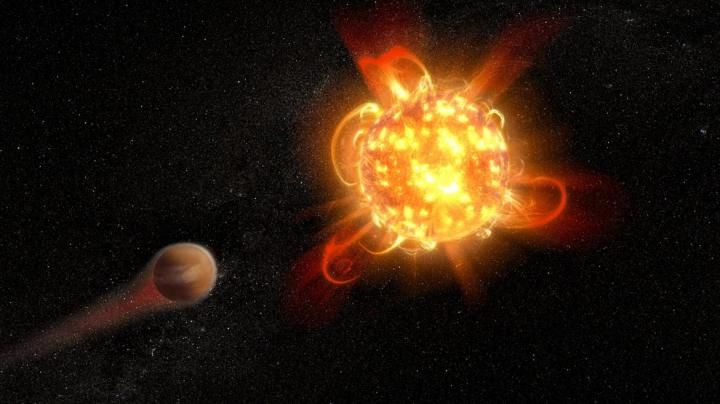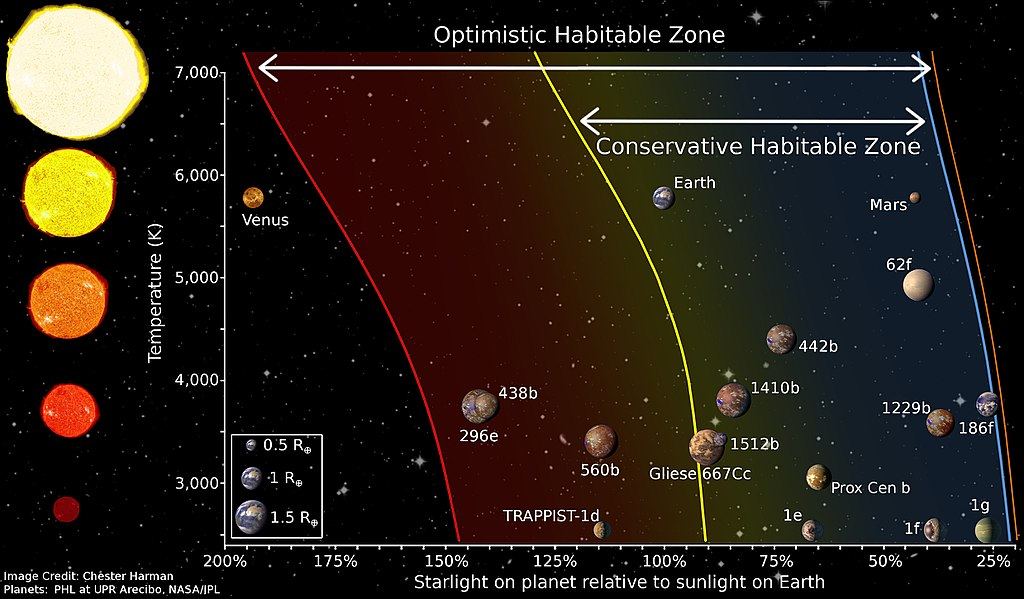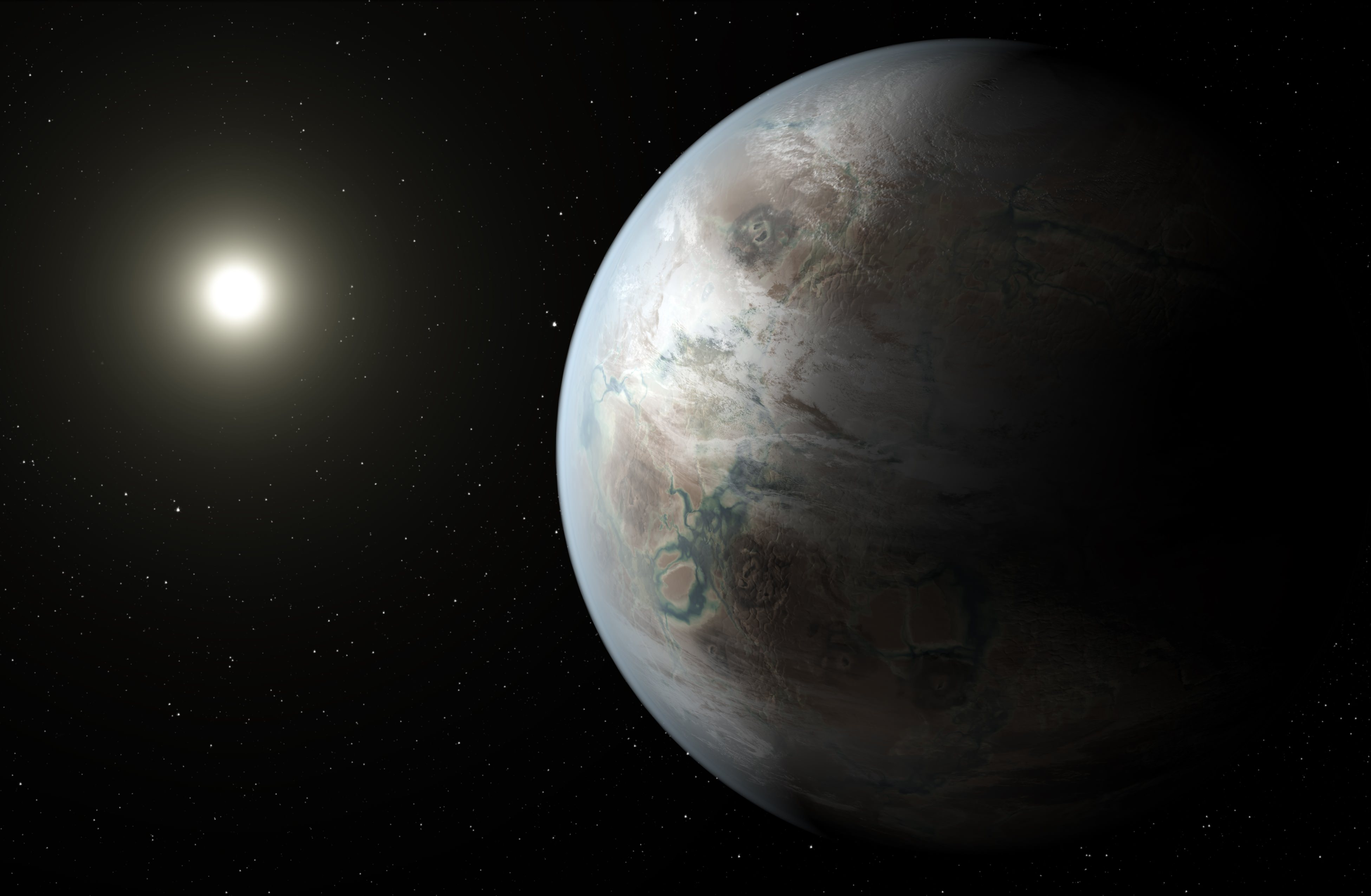Since the Kepler Space Telescope was launched into space, the number of known planets beyond our Solar System (exoplanets) has grown exponentially. At present, 3,917 planets have been confirmed in 2,918 star systems, while 3,368 await confirmation. Of these, about 50 orbit within their star’s circumstellar habitable zone (aka. “Goldilocks Zone”) , the distance at which liquid water can exist on a planets’ surface.
However, recent research has raised the possibility that we consider to be a habitable zone is too optimistic. According to a new study that recently appeared online, titled “A Limited Habitable Zone for Complex Life“, habitable zones could be much narrower than originally thought. These finds could have a drastic impact on the number of planets scientists consider to be “potentially habitable”.
The study was led by Edward W. Schwieterman, a NASA Postdoctoral Program Fellow at the University of California, Riverside, and included researchers from the Alternative Earths Team (part of the NASA Astrobiology Institute), the Nexus for Exoplanet System Science (NExSS), and the NASA Goddard Institute for Space Studies.
According to previous estimates based on Kepler data, scientists concluded that there are likely to be 40 billion Earth-like planets in the Milky Way Galaxy alone, 11 billion of which are likely to orbit like stars our Sun (i.e. G-type yellow dwarfs). Other research has indicated that this number could be as high as 60 billion or even 100 billion, depending on the parameters we use to define habitable zones.
These results are certainly encouraging, since they suggest that the Milky Way could be teeming with life. Unfortunately, more recent research into extra-solar planets has cast doubt on these previous estimates. This is especially the case where tidally-locked planets that orbit M-type (red dwarf) stars are concerned.
In addition, research into how life evolved on Earth has shown that water alone does not guarantee life – nor, for that matter, does the presence of oxygen gas. Further to this, Schwieterman and his colleagues considered two other major biosignatures that are essential to life as we know it – carbon dioxide and carbon monoxide.
Too much of these compounds would be toxic to complex life, whereas too little would mean that early prokaryotes would not emerge. If life on Earth is any indication, basic lifeforms are essential if more complex, oxygen-consuming lifeforms are to evolve. For this reason, Schwieterman and his colleagues sought to revise the definition of a habitable zone to take this into account.

To be fair, calculating the extent of a habitable zone is never easy. In addition to their distance from their star, the surface temperature of a planet depends on various feedback mechanisms in the atmosphere – such as the Greenhouse Effect. On top of that, the conventional definition of a habitable zone assumes the existence of “Earth-like” conditions.
This implies an atmosphere that is rich in nitrogen, oxygen, carbon dioxide, and water, and stabilized by the same carbonate-silicate geochemical cycle process that exists on Earth. In this process, sedimentation and weathering causes silicate rocks to become carbonaceous while geological activity causes carbon rocks to become silicate-based again.
This leads to a feedback loop that ensures that carbon dioxide levels in the atmosphere remain relatively stable, thus allowing for an increase in surface temperatures (aka. the Greenhouse Effect). The closer the planet to the inner edge of the habitable zone, the less carbon dioxide is needed for this to happen. As Schwieterman explained in a recent article by MIT Technology Review:
“But for the middle and outer regions of the habitable zone, atmospheric carbon dioxide concentrations need to be much higher to maintain temperatures conducive for surface liquid water.”

To illustrate, the team used Kepler-62f as an example, a super-Earth that orbits a K-type star (slightly smaller and dimmer than our Sun) located about 990 light years from Earth. This planet orbits its star at about the same distance as Venus does the Sun, but the lower mass of the star means that it is on the outer edge of the habitable zone.
When it was discovered in 2013, this planet was thought to be a good candidate for extraterrestrial life, assuming the presence of a sufficient Greenhouse Effect. However, Schwieterman and his colleagues calculated that it would take 1,000 times more carbon dioxide (300 to 500 kilopascals) than what existed on Earth when complex lifeforms were first evolving (ca. 1.85 billion years ago).
However, this amount of carbon dioxide would be toxic for most complex lifeforms here on Earth. As a result, Kepler-62f would not be a suitable candidate for life even if it was warm enough to have liquid water. Once they factored in these physiological constraints, Schwieterman and his team concluded that the habitable zone for complex life must be significantly narrower – a quarter of what was previously estimated.
Schwieterman and his colleagues also calculated that some exoplanets are likely to have higher levels of carbon monoxide because they orbit cool stars. This places a significant constraint on the habitable zones of red dwarf stars, which happen to account for 75% of stars in the Universe – and which are thought to be the most likely place to find planets that are terrestrial (i.e. rocky) in nature.

These findings could have drastic implications for what scientists consider to be “potentially-habitable”, not to mention the boundaries of a star’s habitable zone. As Schwieterman explained:
“One implication is that we may not expect to find signs of intelligent life or technosignatures on planets orbiting late M dwarfs or on potentially habitable planets near the outer edge of their habitable zones.”
To complicate matters further, this study is one of several to place additional constraints on what could be considered habitable planets of late. In 2019 alone, research has been conducted that shows how red dwarf star systems may not have the necessary raw materials for life to form, and that red dwarf stars might not provide enough photons for photosynthesis to occur.
All of this adds up to the distinct possibility that life in our galaxy may be rarer than previously thought. But of course, knowing with any certainty what the limits of habitability are will require more studies. Luckily, we won’t have to wait too long to find out, since several next-generation telescopes will become operational in the coming decade.
These include the James Webb Space Telescope (JWST), the Extremely Large Telescope (ELT) and the Giant Magellan Telescope (GMT). These and other cutting-edge instruments are expected to allow for much more detailed studies and characterizations of exoplanets. And when they do, we’ll have a better idea of just how likely life is out there.
Further Reading: MIT Technology Review, arXiv


I havent read the paper on which this Article is based, but if the primary hypothesis is that high CO2 is an inhibitor for complex life that would seem to me a flawed assumption. Consisdering there are known extremeophiles that live in high CO2 environments, it doesnt seem like much of a leap for those microbes to have an evolutionary path to more complex lifeforms.. So life ‘as we don’t know it’ should be considered in such an analysis. I understand scientists base assumptions on the 1 example we have (Earth), but Earth shows examples of high CO2 organisms so without examining the evolutionary posibilities of extremeophiles, this paper seems overly restrictive for a definition of Habitability…
Those extremophiles are specialized to their environment, and the geological record tells us that complex life forms emerged long after the Great Oxygenation Event. Assuming life could evolve further in those environments would be pure speculation since we haven’t found any evidence of that happening. We also can’t consider “life as we don’t know it”, because we have no idea what it looks like or what conditions it can arise in.
I get why scientists jumped to the conclusion that there have to be lots of habitable planets filled with life out there, but I’m afraid it was a bit of wanting to see what you want to see to verify their beliefs about the origin of life on planet earth, the only place we know of where life does exist. Dr. Henry Richter is the rocket scientist who was picked to oversee the development of America’s first earth satellite, Explorer I. He is also a Christian. He recently wrote a very interesting book that points out many of the conditions that have to be possible in order for life to exist on another planet. It is quite amazing. The book is entitled “Spacecraft Earth: A Guide for Passengers”.